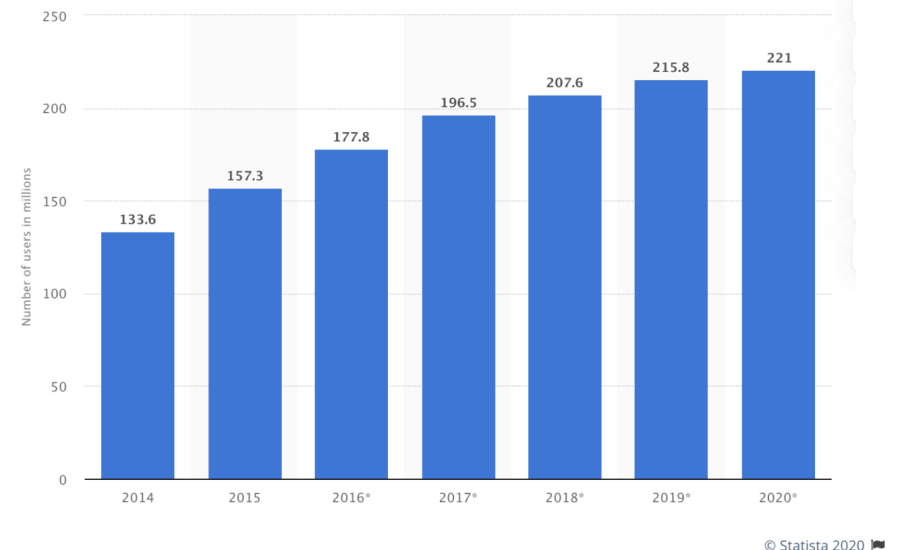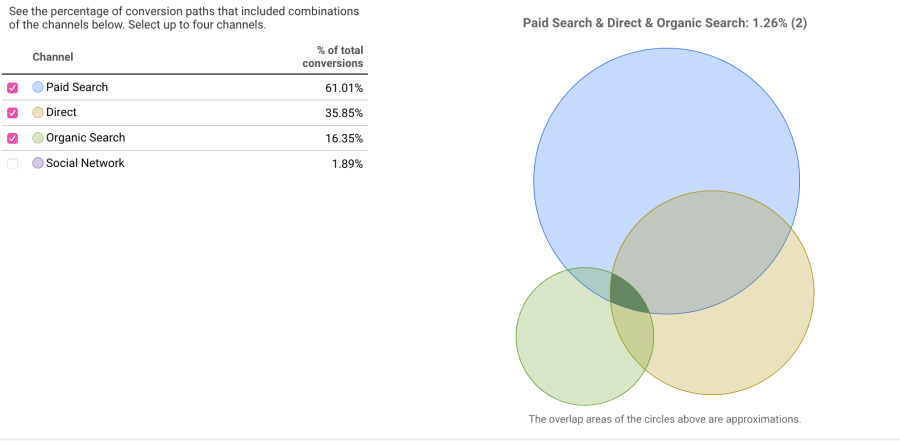How to Leverage Big Data to Predict Success in 2021: Mobility Trends

Photo credit: ipopba/iStock/Getty Images Plus via Getty Images.

Statistically, we see trends showing the number of U.S. mobile users in 2016 was 177.8 million; in 2020 we see over 211 million active mobile searchers.

Blended lead attribution has always been in existence, but with the diverse user patterns, tracking a user's first touchpoint with your company down to the final conversion point can be tricky at best.

New work-from-home (WFH) environments are rapidly changing the face of how we do business. Mobile users have behavioral trends which are very different from 2019 data.




EDITOR'S NOTE
Change seems to be the only constant in our world. What do you need to keep track of to grow and protect your business? How do mobility trends of 2020 show you how to adjust for 2021? This is part two in a five-part series that uncovers the recent marketing changes and events that affect businesses nationwide. Join roofing marketing strategist Anna Anderson, CEO of Art Unlimited, as she looks at how to weave the wins of 2020 into an actionable strategy for 2021.
In the last nine months we have seen rapid changes within users’ mobility trends. New work-from-home (WFH) environments are rapidly changing the face of how we do business. Mobile users have behavioral trends that are very different from 2019 data. As we look to the future, we anticipate users will begin to expect a strong, fully mobile experience to be delivered by brands they trust.
Looking at the Numbers
Statistically, we see trends showing the number of U.S. mobile users in 2016 was 177.8 million; in 2020 we see over 211 million active mobile searchers. Sixty percent of all searches are occurring on a mobile device. In the roofing vertical, we see 60-80% of all searches occurring on mobile devices.
For the first time ever, Google and Apple have released trends data showing the mobility of their users. We are continuing to see trends where U.S. citizens are more mobile within their daily lives than prior years. This requires marketing strategies to be more diverse and focused on mobile.
Diversifying Mobile Marketing
You might ask why a mobile marketing strategy is more diverse than a desktop marketing strategy. The answer is simple: mobile users are more likely to leverage apps to access the information they need to conduct their personal and professional activities. Marketing through apps brings a layer of complexity, as you are usually forced to create a marketing strategy within each platform's environment. Gone are the days of simply creating a strong Google-ranked website. You need to closely look at leveraging three to eight possible mobile platforms to market within regardless of your target market.
Some platforms to consider include:
- Bing
- Apple*
- Yelp
- Nextdoor
- YouTube
- DuckDuckGo
- Private Apps
*Apple is currently testing a private search platform.
Blended Lead Attribution
When tracking traffic and lead sources, you will begin to see blended attribution. Blended lead attribution has always been in existence, but with the diverse user patterns, tracking a user's first touchpoint with your company down to the final conversion point can be tricky at best. Leveraging Google Tag Manager (GTM) will allow you to unify your tracking scripts and bring a rich reporting experience into Google Analytics. Google Analytics also launched its conversion comparison tool, allowing you to visualize the overlap in multi-touched leads.
“Gone are the days of simply creating a strong Google-ranked website. You need to closely look at leveraging three to eight possible mobile platforms to market within regardless of your target market.”
The Future is AI
Artificial Intelligence (AI) is no longer a tool of the future for marketing gurus with expensive software, but rather a tool we now use on a daily basis. Google Ads rolled out its AI ad campaigns in the beginning of 2020. As a Google Premier Partner, we were able to beta test some of the first roofing AI campaigns in the industry. Although extremely exciting, we see the AI ad marketing framework as something that still needs to be developed. Google is moving forward with all ad campaigns using AI. We predict they will deliver a higher quality experience and stronger conversion numbers once refined.
Don’t Delay
Mobile users have a lower tolerance for a delayed experience. The major digital platforms responded and began mandating that top-placed content must be well optimized to ensure users could quickly interact with the desired content/activity. Websites must load within 2.5 seconds to meet the core criteria for Google, Bing, Facebook and others. We’ve seen a high drop in traffic when the users’ load time is delayed.
TIP: Consider running Google’s new tool, Lighthouse, on your website to check your website speed. Our team has been able to prove that websites built for speed will see ROI increases.
Scary, Yet Empowering
In the midst of an ever-changing landscape, we must keep in mind that mobile experiences and speed are two of the most important elements. It is with this in mind why Google, Facebook, and other tech information giants are serving up content within their platforms. Users are less likely to click off of the platform if their problems are solved within the platform used. This is a scary and yet empowering place to be:
- As a consumer, your daily information needs are solved quickly and accurately.
- As a business owner, you lose visibility to who is truly engaging with your content.
- The question looms: How do you win in this new environment?
How to Win
Below are three key tips to ensure you are positioned for success:
Identify the issues you solve for clients and what questions they are asking. Begin documenting the solutions to these questions and become the expert on those topics.
Create media-rich content. Creating written content will drive growth, but users are beginning to expect more. Videos, podcasts, vlogs, social stories, and more are the new path to connecting with users.
Identify your selected platform's custom features. Take time to select what you will do within that platform. Do something your competitors are not doing. It might seem simple, but stepping outside of the box and using all of the tools a platform provides will provide your campaign with the lift needed to drive growth.
To ensure success in the mobile first marketing landscape, you must ensure your communications team is aware of how to connect with and respond to incoming requests. Each platform will have a slightly different communication environment. Blending all communication into one unified platform is challenging to do well. Thus, taking the time to map out a mobile marketing and multi-platform communication plan is a must for 2021!
Looking for a reprint of this article?
From high-res PDFs to custom plaques, order your copy today!










